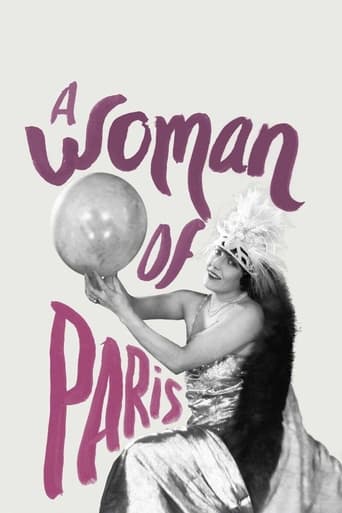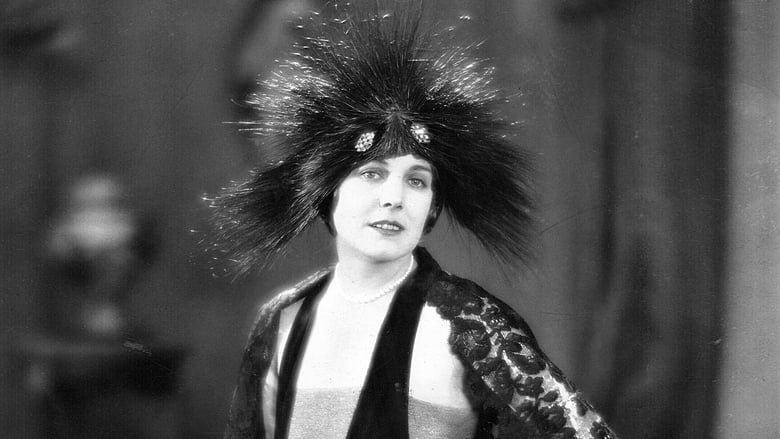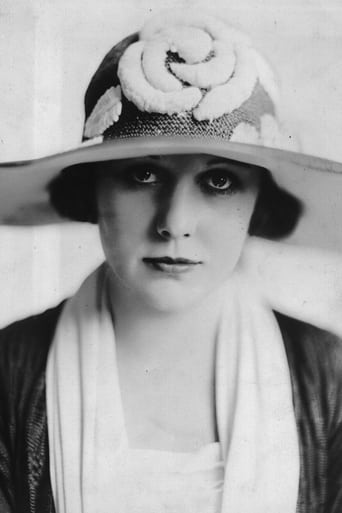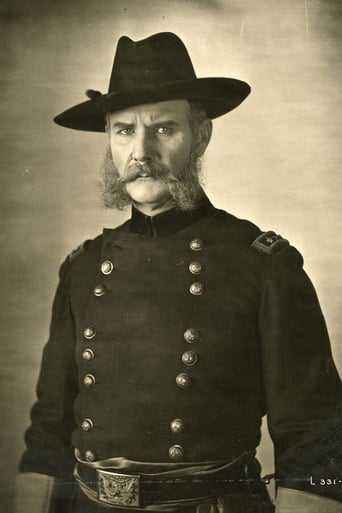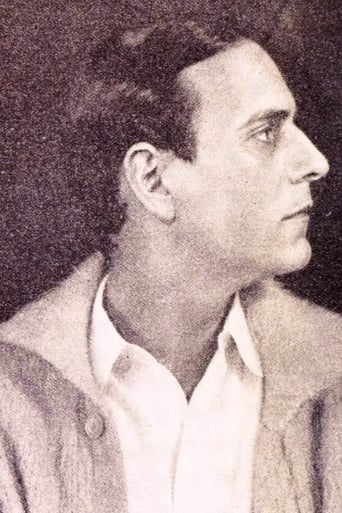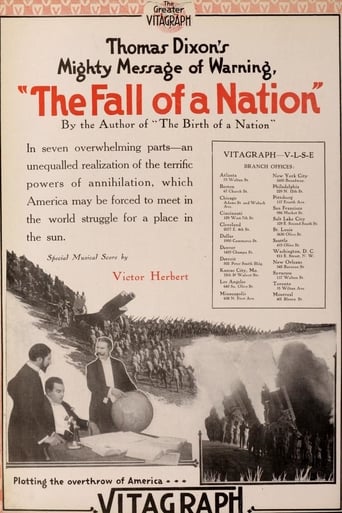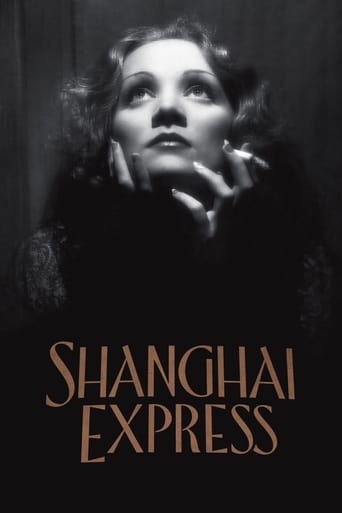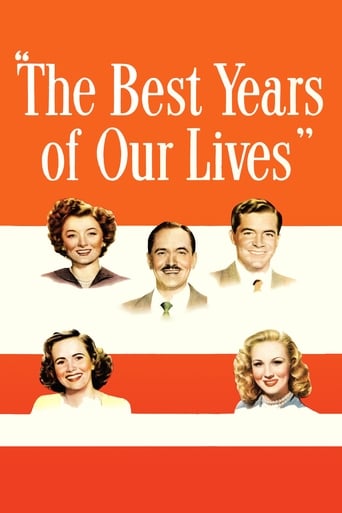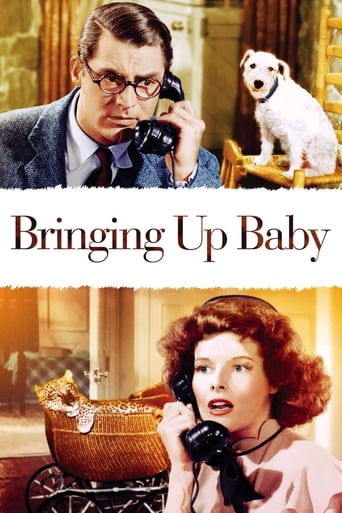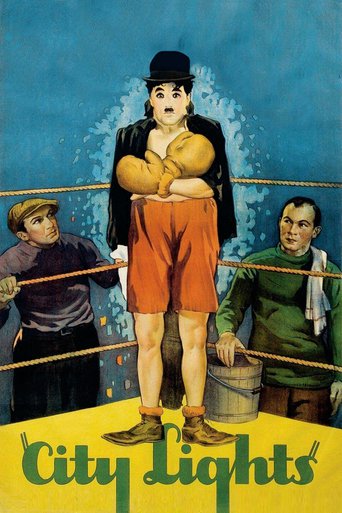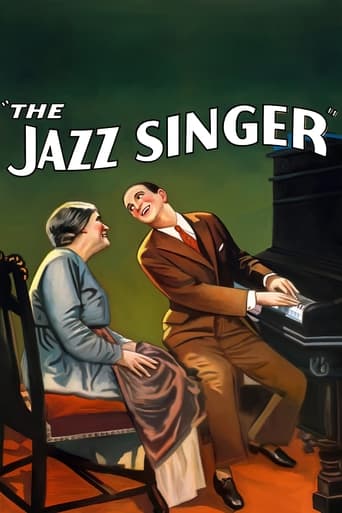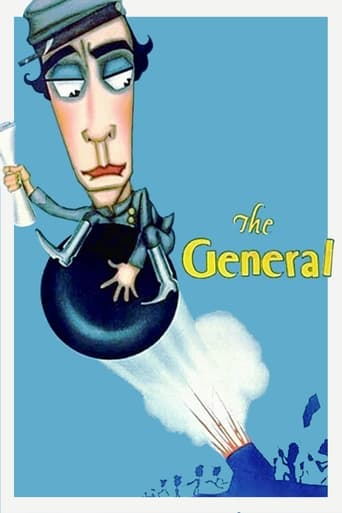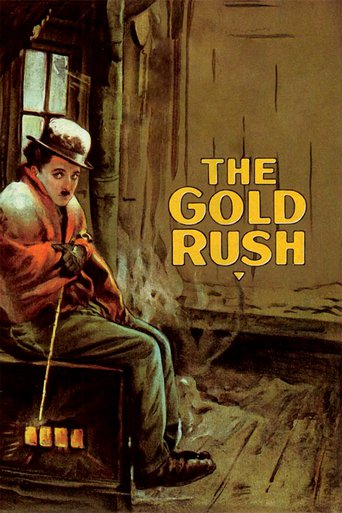A Woman of Paris: A Drama of Fate (1923)
When Marie St. Clair believes she has been jilted by her artist fiance Jean, she decides to leave for Paris on her own. After spending a year in the city as a mistress of the wealthy Pierre Revel, she is reunited with Jean by chance. This leaves her with the choice between a glamorous life in Paris, and the true love she left behind.
Watch Trailer
Cast


Similar titles
Reviews
If the ambition is to provide two hours of instantly forgettable, popcorn-munching escapism, it succeeds.
In truth, there is barely enough story here to make a film.
The best films of this genre always show a path and provide a takeaway for being a better person.
Great movie. Not sure what people expected but I found it highly entertaining.
This charming film easily proves that Charlie Chaplin could do serious drama if only the public would have allowed him.TCM announcer Ben Manciewicz notes that "A Woman of Paris" bombed at the box office but that couldn't have been due to the performances, which were uniformly wonderful.Edna Purviance seems an unlikely heroine -- not dazzlingly gorgeous but convincingly expressive as a woman who'd like to give herself to a troubled artist who lacks the backbone to stand up to his mother and commit.Carl Miller does well as the conflicted painter but Adolphe Menjou is wonderful as a shallow bon vivant who is more entertained by than enamored with the lovely Marie.Lydia Knott is very good in the unglamorous role of Jean's doting mother.I liked the way this film ended on an inspiring note by citing the redemptive value of giving to others -- an ageless message.Coda: Music is used to wonderful effect in this film, as in sequences in which Pierre picks up a miniature saxophone and gives it a tootle. Impressively, it was Chaplin who composed the score.
The audiences of 1923 were let down by the lack of the Little Tramp in A Woman of Paris (1923). Yesterday night in 2014, I knew what to expect; however, I too was let down, because I expect more from a genius like Chaplin.There is no doubt that this film is well-directed. Chaplin knows how to get the most out of every frame. My favorite shot in the whole film is right after the heroine Marie hears her beloved Jean assure his mother that he will not wed someone as loose as Marie has been (after believing herself jilted by Jean, Marie left for Paris and became the mistress of a rich man). Jean discovers Marie in the doorway to his apartment and begs her not to leave. Jean is in the center of the frame, in between his beloved in the door and his triumphant mother, seated quietly in the shadowy background. This is a simple, but evocative way of illustrating Jean's inner conflict.There is no doubt that this film is well-acted. Edna Purviance should have been a major actress; here, she uses no histrionics to convey Marie's world-weariness and yearning for a fuller life than hedonistic Paris can give her. She handles both comedy and drama with ease, more than I can say for some starlets of the period who did manage to achieve public adoration. Adolphe Menjou is wonderful as Marie's lover, somehow keeping him a little likable in spite of his selfishness and amorality.What keeps this film from being a masterpiece is the plot, which is both old-fashioned (yes, even for 1923) and a touch uneven. Yes, this is called "A Drama of Fate," but so many of these coincidences which move the plot along felt contrived and clashed with the mostly realistic characters. The mix of comedic scenes and dramatic ones could have been more seamless. Sometimes the comedy bits even feel like filler.Another complaint concerns Marie's true love, the artist Jean. Compared to everyone else, he's not that interesting. He's as bland as a 1920s leading man could be.A Woman of Paris is not a bad film and it should have been more of a success than what it was back in 1923. But I cannot view it as a lost masterpiece, as others seem to. It's a solid melodrama with fine direction and good performances, but the writing brings it down.
A Woman of Paris has all the makings of a film noir, but fails to deliver on this score, despite the tragic end met by one of the major characters. Chaplin, as writer/director/producer observes the action of this character at a distance (and the fact that he is enacted by a rather charmless Carl Miller further adds to an audience's lack of empathy).Despite Chaplin's Foreword insistence that his movie is not a comedy but a drama, it is actually for the most part an enjoyable comedy of manners, a field in which delightfully dapper Adolphe Menjou excelled, enabling him to easily snatch the picture from its nominal star, Edna Purviance. It seems Chaplin's camera cannot help but focus on Menjou. Chaplin's classy dialogue sub-titles also added a fillip, but Menjou's breezy, rich-as-they-come, luxuriantly self-indulgent take-it-it-leave-it manner would have ensured his success even without Chaplin's help.Chaplin actually conceived the film to launch Edna Purviance (who had starred with him in shorts like the 1919 Sunnyside) as a major star. This ploy was not successful. In my opinion, Miss Purviance lacked both the figure and the charisma that Hollywood stardom demanded. In the Chaplin shorts, she is little more than a foil for the tramp. In A Woman of Paris even newcomer Betty Morrissey and minor players like Malvina Polo, Henry Bergmam and Nelly Bly Baker steal scenes from her, to say nothing of Lydia Knott who compels attention as Jean's fussed mother.
I was looking in Charlie Chaplin's memoirs and I found that his original idea for the plot of A Woman Of Paris came from pillow talk with Peggy Hopkins Joyce involving one of her former boyfriends, a French publisher. From this came Charlie's idea to direct, but not appear in a film and hopefully make his long time leading lady from slapstick comedy, Edna Purviance a major dramatic star.The reason given for the non-success of A Woman of Paris is usually given as the fact that people bought tickets and were disappointed that they did not see a Charlie Chaplin comedy. Probably on the silent screen, star images were even more fixed in people's minds than they were when sound came in.But seeing it today it really does go overboard into melodrama. Edna's a simple country girl who loves Carl Miller, a struggling artist. Some blind mischances of fate and she winds up the paid woman of Parisian rake Adolphe Menjou. It's the tragedy of one romantic and the salvation of sorts for the other that are the basis of the story.You couldn't make a film like it today, audiences would just laugh at it. In 1923 audiences were looking for laughs attached to the Chaplin name and found none. Edna does a fine job, but the public would not accept her in a drama. Adolphe Menjou as the rake comes off best in the cast.The film ironically enough was Chaplin's first for the newly formed United Artists of which he was a quarter interest partner. After this one failed at the box office, he went back to cranking out the comedies we expected from him.Back when I was working person at New York State Crime Victims Board, I had a claimant named Wayne Purviance who was the victim of an anti-gay bias attack in 1982. It was a crime that galvanized the GLBT people of New York City, this person in particular. Wayne was the grand nephew of Edna Purviance.He's no longer among the living, but to you Wayne Purviance who took some real blows for millions of people, this review is lovingly dedicated to you and your wonderful aunt.

